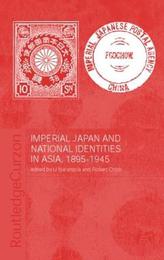
|
Imperial Japan and National Identities in Asia, 1895-1945
Hardback
Main Details
| Title |
Imperial Japan and National Identities in Asia, 1895-1945
|
| Authors and Contributors |
Edited by Narangoa Li
|
|
Edited by Robert Cribb
|
| Series | NIAS Studies in Asian Topics Series |
|---|
| Series part Volume No. |
No.31
|
| Physical Properties |
| Format:Hardback | | Pages:384 | | Dimensions(mm): Height 216,Width 138 |
|
| Category/Genre | Asian and Middle Eastern history
World history - from c 1900 to now |
|---|
| ISBN/Barcode |
9780700714827
|
| Classifications | Dewey:320.5405 |
|---|
| Audience | | Undergraduate | | Postgraduate, Research & Scholarly | | Professional & Vocational | |
|---|
| Illustrations |
maps
|
|
Publishing Details |
| Publisher |
Taylor & Francis Ltd
|
| Imprint |
RoutledgeCurzon
|
| Publication Date |
1 May 2003 |
| Publication Country |
United Kingdom
|
Description
Nationalism was a powerful force in Asia during the era of Japanese imperial expansion (1895-1945). Asia's peoples sought freedom from the Western and Chinese empires which dominated the continent, while challenging each other over borders and systems of government. From the earliest Japanese intrusions on the mainland in 1895 until final defeat in 1945, Japanese authorities had to grapple with the national identities of the people they sought to dominate. This book traces Japan's impact on these national identities, from its clumsy intervention in Siberia, through its ambitious attempts to create puppet states in Manchuria and China, to its brief but dramatic foray into Southeast Asia. The book compares the perspective of societies such as India and Tibet, which observed Japan from a distance, with the experience of societies which experienced Japanese intervention at close hand. The authors highlight the contradictions in Japanese policy, which sometimes encouraged other Asian nationalist movements, sometimes suppressed or undermined them, and sometimes sought to create new identities out of little more than romantic imagination. This book provides a valuable resource for students of East Asia.
|